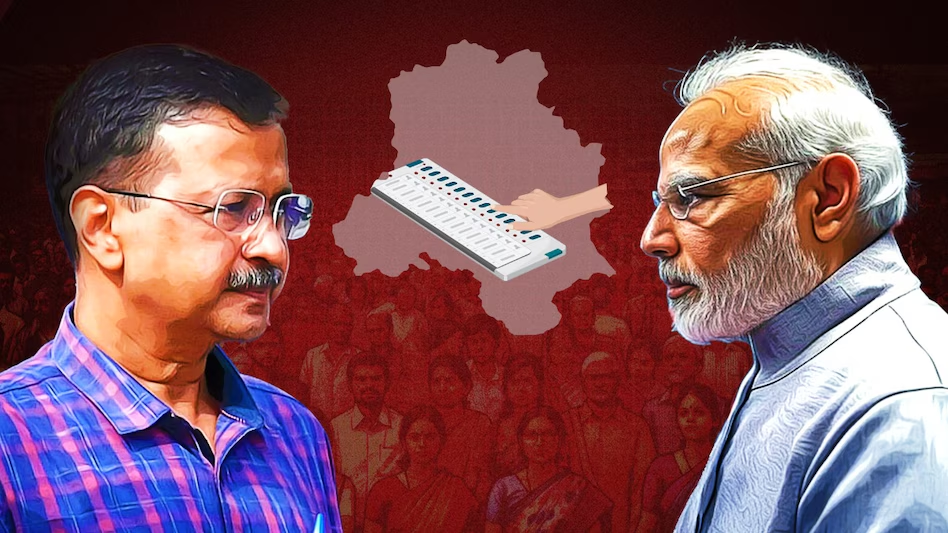The 2025 Delhi Legislative Assembly elections marked a significant political shift, with the Bharatiya Janata Party (BJP) securing a majority after 27 years, while the Aam Aadmi Party (AAP) faced a substantial defeat. This outcome has prompted extensive analysis to understand the factors contributing to the BJP’s victory and AAP’s decline. Below is a point-wise examination of the key elements influencing this electoral result.

1. Election Results Overview
In the 2025 Delhi Legislative Assembly elections, the Bharatiya Janata Party (BJP) achieved a significant victory, securing 48 out of the 70 available seats. This win marks the BJP’s return to power in Delhi after 27 years. The Aam Aadmi Party (AAP), which had been the incumbent, won 22 seats, experiencing a notable decrease from its previous majority. citeturn0news10
2. Anti-Incumbency Sentiment Against AAP
After a decade in power, AAP encountered growing public dissatisfaction. Voters expressed concerns over unmet promises and perceived administrative complacency, leading to a desire for change. This anti-incumbency wave significantly eroded AAP’s support base. citeturn0search2
3. Corruption Allegations Impacting AAP’s Image
High-profile corruption charges against AAP leaders, including the arrest of Arvind Kejriwal on graft allegations, tarnished the party’s clean governance image. These incidents undermined public trust and provided ammunition for opposition attacks. citeturn0news10
4. BJP’s Proactive Welfare Promises
The BJP’s campaign included pledges of financial support for women, the elderly, and youth, aiming to attract AAP’s traditional voter base among the economically disadvantaged. These promises resonated with voters seeking tangible benefits. citeturn0news10
5. Middle-Class Support Through Economic Policies
The BJP’s recent federal budget, which reduced income taxes for the middle class, appealed to this demographic in Delhi. This fiscal policy was perceived as a direct benefit, enhancing BJP’s appeal among salaried professionals. citeturn0news11
6. Effective Campaign Strategy by BJP
Prime Minister Narendra Modi’s targeted campaign efforts, focusing on local issues and development plans, effectively mobilized support. The BJP’s strategic messaging and grassroots outreach contributed to swaying undecided voters. citeturn0search2
7. AAP’s Leadership Challenges
The defeat of prominent AAP leaders, including Arvind Kejriwal losing his own seat, highlighted internal challenges within the party. These losses raised questions about leadership effectiveness and strategic direction. citeturn0search3
8. Voter Fatigue with AAP’s Governance
Extended tenure in power often leads to voter fatigue. Perceptions of stagnation in policy innovation and responsiveness contributed to a decline in AAP’s popularity, as voters sought alternative leadership.
9. BJP’s Organizational Strength
The BJP’s robust party machinery and disciplined cadre facilitated effective voter mobilization. Their ability to execute a well-organized campaign played a crucial role in securing electoral success.
10. National Political Climate Influences
The broader national political environment, including BJP’s performance in other state elections and central governance, influenced voter perceptions in Delhi. A desire for alignment with the central government may have swayed voters towards BJP.
11. Strategic Alliances and Political Dynamics
The absence of a united opposition and strategic alliances may have fragmented the anti-BJP vote, inadvertently contributing to BJP’s victory. Political dynamics and coalition strategies played a pivotal role in the electoral outcome.
In conclusion, the BJP’s historic win in the 2025 Delhi elections resulted from a combination of strategic campaigning, policy promises, and capitalizing on AAP’s vulnerabilities. Conversely, AAP’s decline can be attributed to anti-incumbency sentiments, leadership challenges, and erosion of public trust due to corruption allegations. This election underscores the dynamic nature of voter behavior and the critical importance of addressing public concerns and perceptions in governance.


